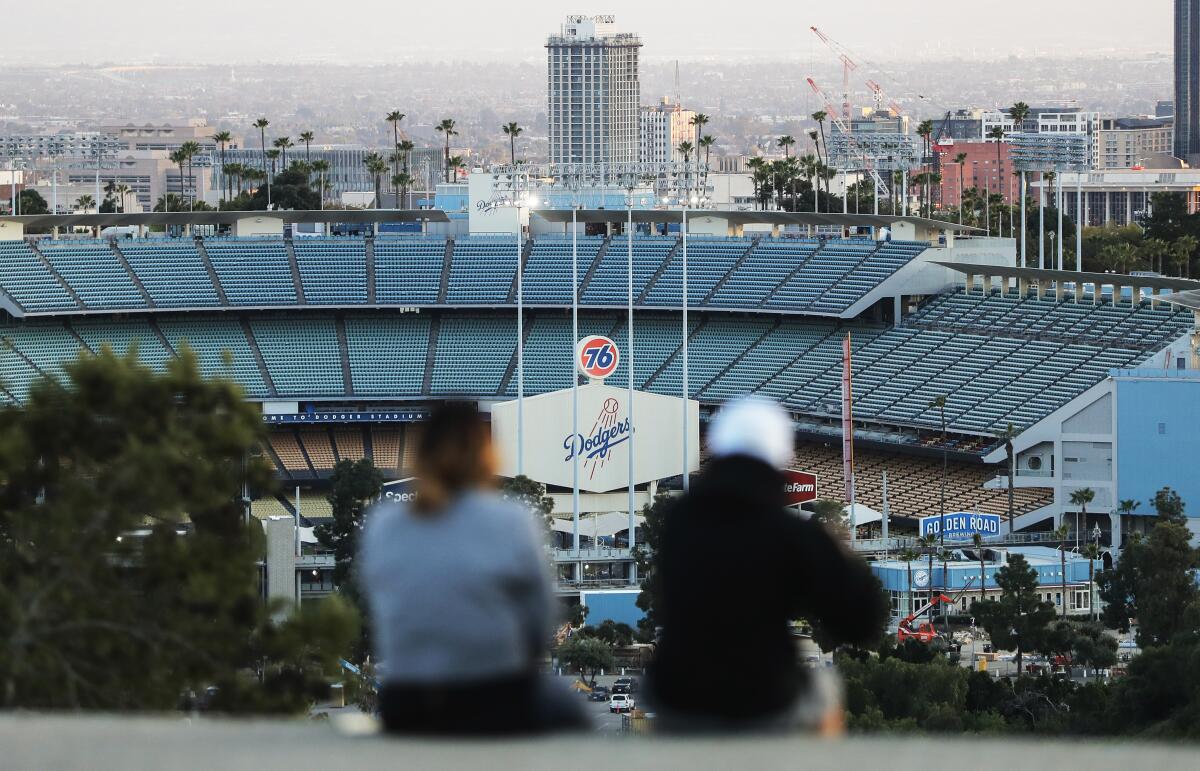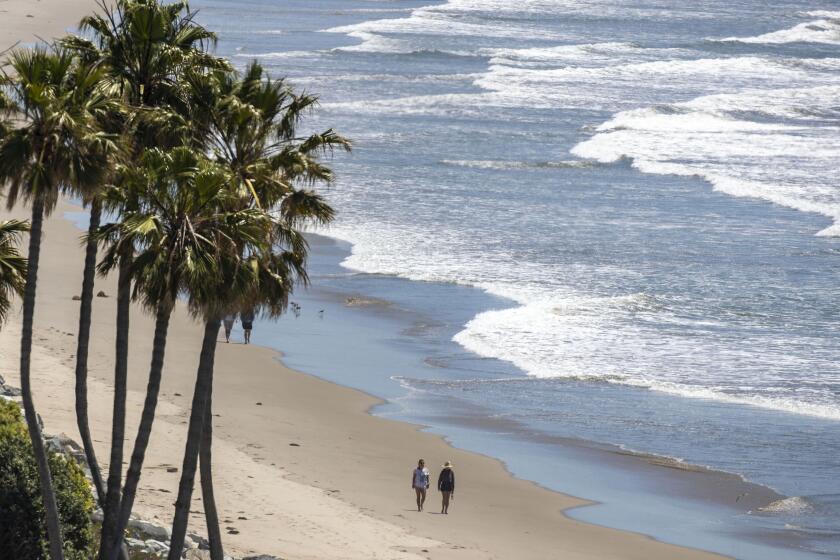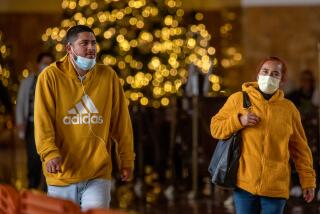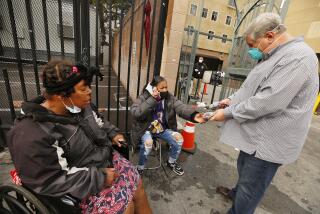This is what it will take for L.A. County to lift stay-at-home orders, officials say

- Share via
Los Angeles County officials are developing a plan to slowly ease stay-at-home orders, but four key benchmarks must first be met in the battle against the coronavirus.
“We don’t want to undo all the good we’ve done and accomplished so far,” Supervisor Kathryn Barger said Friday. “We are not yet on the other side of this pandemic and we don’t want to prematurely ease restrictions.”
She said that the county will first need to make sure that its hospitals maintain capacity to treat both people who are sick and those with standard medical needs. That includes ensuring the hospitals are adequately staffed, have enough resources to perform testing, and have a sufficient number of ventilators and other medical supplies to handle routine care as well as possible influxes of COVID-19 patients.
Second, the county will need to make sure that protections are in place for those who are most vulnerable, including the elderly, homeless people and those who live in institutional settings or don’t have access to services.
Third, the county must have the capacity to test, isolate and quarantine all those who are ill, as well as to conduct surveillance to prevent further spread.
And fourth, the county must maintain physical distancing and infection control measures, including by providing businesses with educational materials and guidance to ensure that the rules can be followed when they reopen.
“Ultimately, we want to make sure that as many people return to work as safely and as quickly as possible,” Barger said. “If we meet the guidelines I shared, we can prevent or limit the spread of COVID-19 when we loosen physical distancing measures.”
These photos show what’s open and what’s closed along the Southern California coast.
The guidelines are similar to those outlined by top state officials.
Gov. Gavin Newsom said this week that most of the six milestones he set to consider loosening the stay-home order he issued last month have not been met. The only change the governor has made is to allow some elective surgeries to again be scheduled in hospitals, citing sufficient capacity.
The six goals include the ability to closely monitor and track potential cases, prevent infection of high-risk people, prepare hospitals to handle surges, develop therapies to meet demand, ensure schools, businesses and child-care facilities can support social distancing, and develop guidelines for when to ask Californians to stay home again if necessary.
These are some of the unusual new scenes across the Southland during the coronavirus outbreak.
Experts have said lifting social distancing rules will be a long and deliberate process, with some businesses coming back before others. For example, restaurants might be able to reopen with strict social distancing, but big events would be harder to restart anytime soon.
Some California communities have pressed Newsom to ease restrictions in areas where the coronavirus has not appeared to spread dramatically.
But the governor has resisted. COVID-19 remains a serious and growing health threat and loosening his statewide order prematurely could lead to a second wave of infections and fatalities, he said.
On Friday, Barbara Ferrer, director of the Los Angeles County Department of Public Health, said repeatedly that the beaches must remain closed to prevent an overflow of visitors who might be carrying the potentially deadly SARS-CoV-2 virus. She has asked L.A. residents not to crowd beaches in other counties.
“We have high rates of illness and a lot of people in our county who are dying. We know it’s best right now for us Angelenos to stay home, or stay outside [in] your own yard or your own neighborhood,” Ferrer told the media Wednesday. To do otherwise, she said, would increase the risk of bringing the infection to L.A. “And we absolutely don’t need that.”
More to Read
Sign up for Essential California
The most important California stories and recommendations in your inbox every morning.
You may occasionally receive promotional content from the Los Angeles Times.













